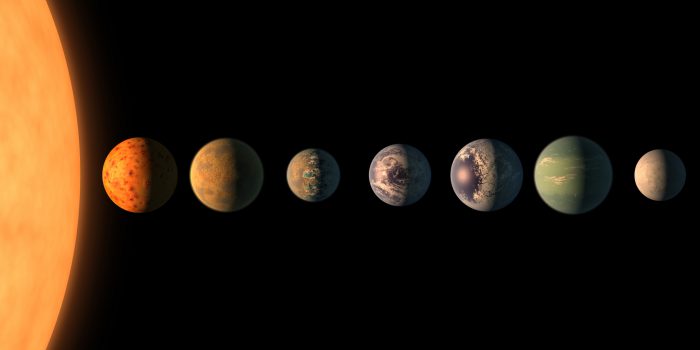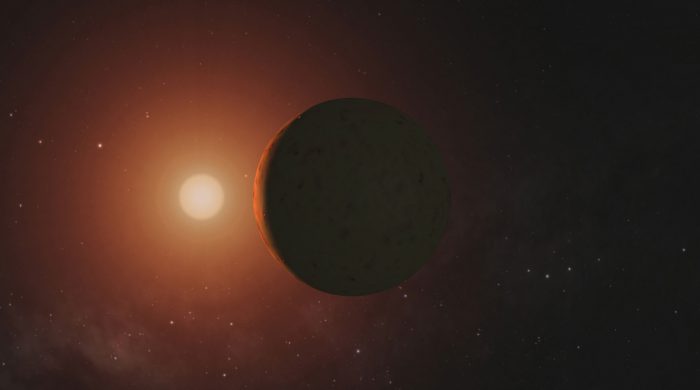Just last week, NASA announced its most exciting discovery in years (and that's saying something given that this happened recently. And this. And this, too). They discovered that Trappist-1, a solar system only about 39 light years away, has seven Earth-sized planets that are all capable of hosting life.

An artist's impression of Trappist-1 and its seven planets. (NASA/JPL-CalTech)
It is an amazing discovery that has everyone's imaginations going wild. Seven new worlds? Are there oceans there? Animals? Plant life? Do they look like life on Earth at all? Are there creatures like... us? With civilizations, technology, inventions?
It is inevitable after hearing such groundbreaking news that someone will step forward and ask the question on everyone else's mind: When can we go there?
Let's answer that one together now.
The trip of your life... if you could make it
On the scale of the universe, 40 light years away is actually very close. If the universe was the size of our solar system, we'd practically be next-door neighbours.
But in the physical world, 39 light years is 369 trillion kilometres (229 trillion miles) away. Even if you were piggybacking on a beam of light, it would take around 39 years to get there. That is a crazy long trip (about as long as some of your parents have been alive!), but it is a length of time that a human being could technically survive.
The only problem?
Going as fast as the speed of light is impossible. So we'll need to look at the next available options. (Spoiler alert: they are a lot slower than we'd need them to be...)
Take the shuttle... better bring a book
When we think of humans going into space, we naturally think of the space shuttle. It's maximum speed sits at around 28,160 km/h (17,500 mph). That might be a lot faster than a car on the highway, but it would take 1.5 million years to reach Trappist-1.
New Horizons needs new technology
If we forgot about getting human beings there for a moment and just focus on getting a probe to the solar system, the options get a little better. New Horizons is the fastest spacecraft ever launched by humans. Its top speed of 51,500 km/h (32,000 mph) is twice as fast as the space shuttle. Though it would still need 815,000 years to reach Trappist-1.
Breakthrough Starshot gives us our best shot (if we actually build it)
Given present technology, actually observing Trappist-1 up close looks like wishful thinking. But there is one curious possibility (which we wrote about already last year). It is called the Breakthrough Starshot, a pretty fitting name really. This involves sending a nanocraft ("nano" means super tiny) for a laser-propelled "sail" across the cosmos. In theory, it could travel at about 20% the speed of light. That's 216 million km/h (134 million mph)! And it would reach Trappist-1 in under 200 years. Not bad, right?
Unfortunately, this is still just a theory. No one has built the Starshot yet.
Still, don't lose heart, you space dreamers. Because you know what also moves really fast? The progress of the space program! It was only 60 years ago in 1957 that the Soviet Union launched Sputnik-1, the first artificial satellite. Since then, scientists and astronauts have achieved so much in exploring the our own solar system and beyond. Will you grow up to see pictures beamed back home from one of these brand new worlds?
Honestly? We wouldn't bet against it!
 As it turns out, it might be a while before any human being gets to see this view in person. (NASA/JPL-CalTech)
As it turns out, it might be a while before any human being gets to see this view in person. (NASA/JPL-CalTech)










The varied information you have on Owlconnect is wonderful for me to hear about, in a brief and informative way, about news that otherwise I might not know about.
Thank you!
This is so cool! I’m gonna write a sort story about it next time our teacher tells us to write one!!! 😉
I think there would be aliens. Maybe they are blue